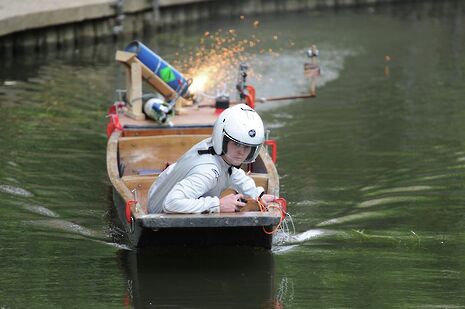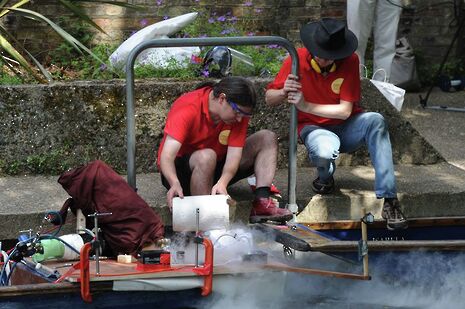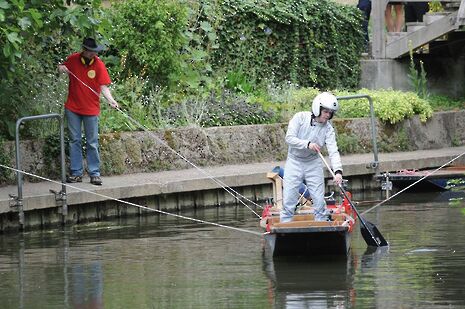Scientists unleash cake-powered rocket punt on the Cam
Fuelled by Fitzbillies’ famous Chelsea buns, the rocket-powered punt made waves down on the River Cam earlier this week

Scientists at the Cambridge Science Centre have proved that rocket science can not only be fun but also tasty when a rocket punt, powered by Fitzbillies’ famous Chelsea buns, had its maiden voyage on the River Cam earlier this week.
The rocket engine, which was attached to a wooden punt to mark the launch of the Science Centre’s COSMIC exhibition, was fuelled by cakes frozen by nitric oxide, with sugar, fat and oxygen allowing the ingredients to burn. Ten buns produced approximately forty seconds of thrust.

Jon London, a self-described “puntanaut”, masterminded the project, having previously worked behind the scenes on such TV shows as Sky’s ‘Brainiac: Science Abuse’. He described the challenge of creating a dramatic opening to the COSMIC exhibition, which focuses on space exploration, as demanding something that was both “Cambridge-y” and “space-y”.
Having faced scepticism from colleagues, London, who has built rockets using salami and fish and chips as fuels in the past, described the use of Fitzbillies’ Chelsea buns as “the only way to make this even more Cambridge-y”.
He described the process of building the rocket-powered punt as “Frankenstein[ing]” different components together, including repurposing the launch button from a model rocket as a box to house the water pump for the coolant system and cannibalising pieces from two other rocket engines in his shed.
Amazingly, the whole project came in at around £30, thanks to the reuse of existing materials and Fitzbillies having donated the Chelsea buns.

The Cambridge Science Centre is an interactive charity science centre for children of all ages, with London claiming that the range spans from “four months to eighty years old”. It hosts workshops, talks and shows to get people more involved and interested in science and technology.
The COSMIC exhibition, which ran from 30th June to 23rd July, focused on exploring the solar system, the wider universe and the technology behind space exploration.
@JPRobbo
 Features / Should I stay or should I go? Cambridge students and alumni reflect on how their memories stay with them15 December 2025
Features / Should I stay or should I go? Cambridge students and alumni reflect on how their memories stay with them15 December 2025 News / Cambridge study finds students learn better with notes than AI13 December 2025
News / Cambridge study finds students learn better with notes than AI13 December 2025 Comment / The magic of an eight-week term15 December 2025
Comment / The magic of an eight-week term15 December 2025 News / News In Brief: Michaelmas marriages, monogamous mammals, and messaging manipulation15 December 2025
News / News In Brief: Michaelmas marriages, monogamous mammals, and messaging manipulation15 December 2025 News / Uni Scout and Guide Club affirms trans inclusion 12 December 2025
News / Uni Scout and Guide Club affirms trans inclusion 12 December 2025










